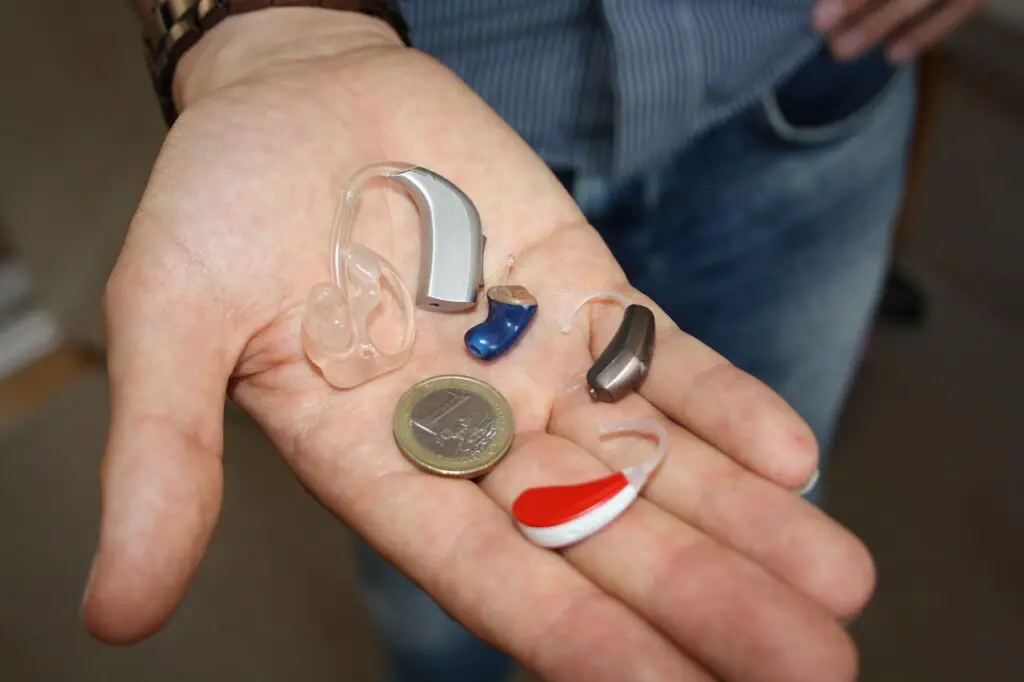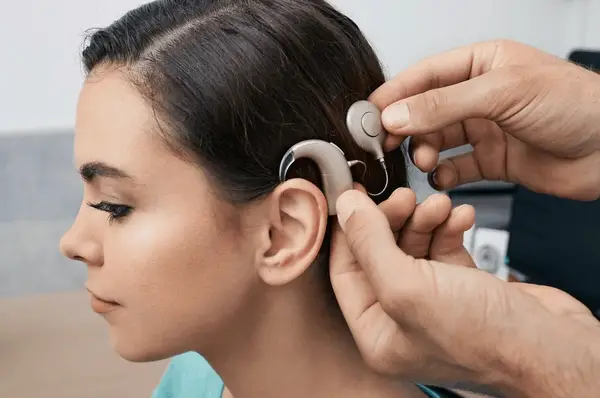Understanding Hearing Aids
Hearing aids are sophisticated electronic devices designed to amplify sounds for individuals experiencing hearing loss. These devices come in various styles, sizes, and technological capabilities, aiming to improve hearing abilities and overall quality of life for those with hearing impairments.
How Hearing Aids Work
Hearing aids consist of several components working together to enhance hearing:
- Microphone: Captures sound from the environment.
- Amplifier: Processes and amplifies incoming sounds.
- Receiver/Speaker: Transmits amplified sounds into the ear canal.
- Battery: Powers the device.

The microphone picks up environmental sounds, which are then processed and amplified by the device. The amplified sound is delivered through the receiver into the ear canal, making it more audible and clear for the wearer.
Types and Styles
Hearing aids come in different styles, including:
- Behind-the-Ear (BTE): Worn behind the ear, suitable for various degrees of hearing loss.
- In-the-Ear (ITE): Fits inside the outer ear, available in different sizes.
- In-the-Canal (ITC) and Completely-in-the-Canal (CIC): Fit partially or entirely inside the ear canal, offering discreetness.
Each style offers distinct features, comfort levels, and suitability based on the individual’s preferences and hearing needs.
Costs Associated with Hearing Aids
Several factors contribute to the cost of hearing aids:
- Technology Level: Advanced features and technology in hearing aids, such as noise reduction, Bluetooth connectivity, and directional microphones, affect the overall cost.
- Style and Design: Smaller, more discreet styles or custom fittings might have a higher price tag compared to standard models.
- Manufacturer and Brand: Different brands offer varying price ranges based on their technological advancements, reputation, and features.
Average Costs
On average, a single hearing aid can range from a few hundred to several thousand dollars. Factors such as the level of hearing loss, desired features, and the quality and brand of the device significantly impact the overall cost. It’s essential to consider that most individuals require two hearing aids for optimal hearing, doubling the cost. You can even browse basic hearing aids here, on Amazon.
Additional Expenses
Apart from the initial purchase, ongoing expenses may include:
- Maintenance: Regular cleaning, battery replacements, and repairs might incur additional costs.
- Follow-up Appointments: Audiologist consultations for adjustments, fittings, and periodic check-ups contribute to the overall maintenance cost.
Conclusion
Hearing aids serve as transformative devices, improving the quality of life for individuals experiencing hearing loss. Their functionality, coupled with diverse styles and technological advancements, caters to a wide range of hearing needs.
Understanding the functionality and costs associated with hearing aids assists individuals in making informed decisions about their hearing health. Seeking guidance from audiologists or hearing care professionals can help navigate the options available and find the most suitable solution tailored to individual needs and preferences.
Understanding Cochlear Implants
Cochlear implants are groundbreaking devices designed to restore hearing for individuals with severe to profound hearing loss. Unlike hearing aids that amplify sound, cochlear implants bypass damaged portions of the ear and directly stimulate the auditory nerve, transmitting signals to the brain.
How Cochlear Implants Work
Cochlear implants consist of several components:
- External Processor: Captures sounds from the environment and processes them into digital signals.
- Internal Receiver-Stimulator: Surgically implanted in the cochlea, this component receives signals from the external processor and transmits them as electrical impulses to the auditory nerve.
- Electrodes: Placed within the cochlea, these electrodes stimulate the auditory nerve, allowing sound perception.

The external processor captures sounds, which are then converted into digital signals and transmitted to the internal receiver. The receiver stimulates the auditory nerve via the electrodes, bypassing damaged hair cells in the cochlea and allowing the brain to interpret sound.
Candidacy and Suitability
Cochlear implants are suitable for individuals with severe to profound hearing loss who gain limited benefit from traditional hearing aids. A comprehensive evaluation by audiologists or otolaryngologists helps determine candidacy based on the severity and nature of hearing loss.
Associated Costs
Cochlear implants involve several costs, including:
- Device and Surgery: The cost of the cochlear implant device itself, surgical procedure, and hospital fees contribute significantly to the overall expense. This cost can range from tens of thousands to over a hundred thousand dollars per implant, including both the device and surgical expenses.
- External Processor: The external processor, which requires regular upgrades and replacements over time, adds to the ongoing expenses.
- Rehabilitation and Follow-ups: Post-surgery rehabilitation, auditory therapy, and regular follow-up appointments with audiologists or speech therapists are essential for adapting to the implant and optimizing its performance.
Insurance Coverage
Some health insurance plans may cover part or all of the costs associated with cochlear implants, including the device, surgery, and follow-up care. However, coverage varies widely, and individuals should consult their insurance providers to understand the extent of coverage available.
Conclusion
Cochlear implants represent an incredible advancement in restoring hearing for individuals with severe to profound hearing loss. Understanding their functionality, candidacy criteria, and associated costs empowers individuals to make informed decisions regarding their hearing health.
While cochlear implants involve significant initial expenses, their transformative impact on hearing abilities and quality of life for suitable candidates can be invaluable. Consulting healthcare professionals and exploring insurance coverage options can aid in managing the costs associated with cochlear implants.



